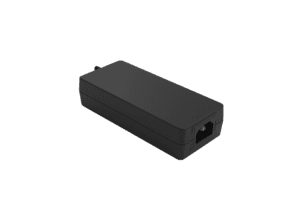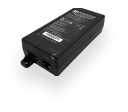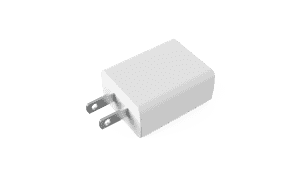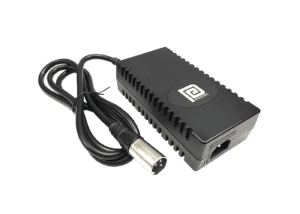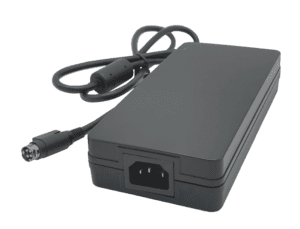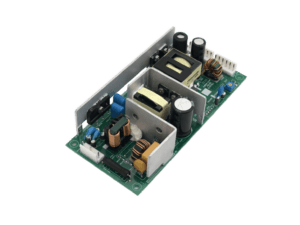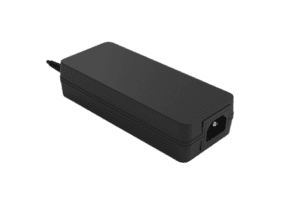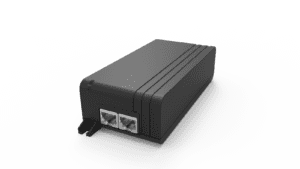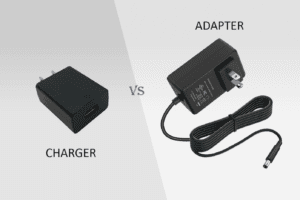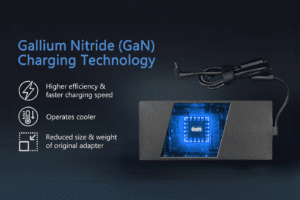BLOG
What Is the Best Charging Station for Large-Scale Warehouse Robots?
Table of contents
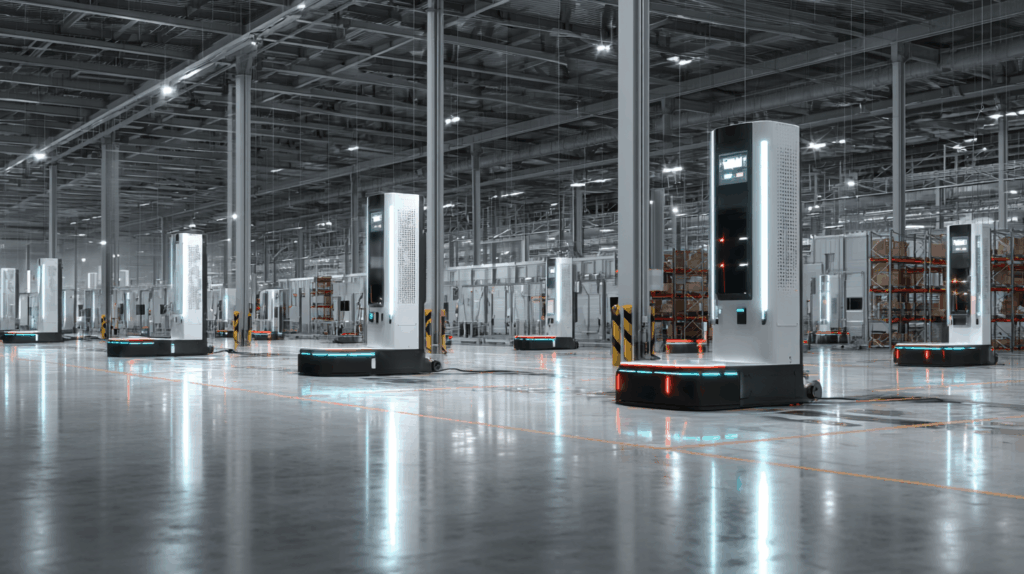
Warehouse automation is no longer a futuristic concept—it’s an accelerating global reality. From Amazon fulfillment centers to regional 3PL hubs, the surge in autonomous mobile robots (AMRs), automated guided vehicles (AGVs), and robotic picking systems is reshaping how goods are moved, stored, and shipped. But while robot fleets grow, one critical piece of infrastructure is racing to keep up: the robotic docking and charging station.
As warehouses scale from dozens to hundreds (or even thousands) of robots, charging stations must evolve from static endpoints into smart, scalable, and fleet-ready infrastructure. This article explores how warehouse automation growth is fueling demand for next-generation robotic docking systems—and what OEMs, integrators, and operators need to know to keep power delivery in sync with operational expansion.
Why Warehouse Automation Is Surging Worldwide
Several global trends are accelerating the adoption of robotics in warehousing:
Top Drivers
- E-commerce growth fueling same-day and next-day shipping expectations
- Labor shortages and rising wage costs
- Global supply chain resilience and reshoring initiatives
- Smarter warehouse management systems (WMS) enabling robot orchestration
- Increased SKU complexity and demand for real-time inventory movement
Impact on Infrastructure
- Higher robot-to-dock ratios required for uptime
- Growing need for intelligent, load-balanced charging
- Pressure to minimize human intervention in 24/7 facilities
- Emphasis on modular, scalable docking platforms
Best Practices
- Align charging infrastructure planning with robot fleet growth forecasts
- Design docks with interoperability across robot models
- Use cloud-based monitoring tools to track charge events and usage
- Consider edge-based local logic for real-time charge queue management
Warehouse robot growth isn’t linear—it’s exponential. Docking systems must scale accordingly.
Why Static Charging Solutions No Longer Work for Dynamic Warehouses
Traditional fixed-location chargers can’t keep up with modern warehouse demands. High-density environments, dynamic task flows, and mixed fleets require mobile, modular, and intelligent charging stations.
Key Challenges of Static Docks
- Limited flexibility for changing robot paths or layout reconfigurations
- Bottlenecks when too many robots wait to charge in the same area
- High failure rates from overused connectors and mechanical wear
- No support for adaptive power management or smart fleet coordination
Features of Scalable Charging Infrastructure
- Modular bays that can be installed, removed, or repositioned as needed
- Smart charging algorithms based on robot priority, state of charge, and task urgency
- Remote fault detection and predictive maintenance systems
- Integration with WMS and robot fleet managers for real-time synchronization
Best Practices
- Deploy multi-port hubs for high-traffic zones
- Use docking logic that prioritizes fast-charge cycles for task-critical bots
- Include BMS handshakes and dynamic voltage management
- Design docks with low-profile enclosures to avoid warehouse congestion
Today’s charging stations must evolve from fixed hardware to adaptive infrastructure assets.
Key Design Requirements for Scalable Docking Infrastructure
Scalability starts with smart design. Charging systems must be ready to expand without compromising performance or increasing downtime.
Top Design Features
- Stackable or rail-mounted bays for quick expansion
- Universal connectors or magnetic pads for multi-robot support
- Wide-voltage output range (24V, 36V, 48V) for different robot platforms
- Real-time communication interfaces (CANBus, Ethernet, Wi-Fi)
Top Benefits
- Reduces warehouse retrofit costs during robot fleet expansion
- Supports gradual or zone-based rollouts
- Allows consistent uptime across mixed robot tasks (picking, moving, sorting)
- Enables proactive system upgrades without interrupting operations
Best Practices
- Work with OEM partners offering modular dock kits and cable sets
- Choose chargers with firmware flexibility for voltage profile updates
- Centralize monitoring with APIs into WMS or ERP systems
- Validate docking system performance under peak workload simulations
Scalable infrastructure means more robots, less stress—and no delays to power access.
CLIENT'S QUOTE
"Phihong’s PoE solutions have made a huge difference for us! Our network runs more efficiently, and we’ve seen real cost savings. We couldn’t be happier!"
Smart Charging Features That Support Robotic Fleet Growth
Charging systems must not only expand—they must think. Smart features help manage growing robot populations without operator overload.
Smart Dock Capabilities
- Auto-scheduling of charging events based on robot utilization
- Fleet load balancing to avoid power spikes or grid strain
- Thermal monitoring and failure diagnostics
- Over-the-air (OTA) firmware updates for evolving safety logic
Top Benefits
- Enables 24/7 fleet operation without manual charging cycles
- Reduces risk of simultaneous low-charge failures
- Improves energy efficiency and facility power planning
- Supports AI-driven fleet learning and predictive maintenance
Best Practices
- Use edge-based control logic for sub-second decision-making
- Choose docks with onboard storage for offline operation
- Train robots to reroute to alternate docks when queues form
- Analyze charging logs to identify fleet health trends
Smart charging transforms docks into strategic intelligence nodes within the warehouse.
Power and Facility Integration for Warehouse-Scale Charging
Large-scale robotics deployments require equally robust electrical infrastructure. Docking systems must align with facility layout, available power, and safety protocols.
Integration Considerations
- Total site power capacity and available circuits
- Location of utility rooms and conduit routing
- Safety zones for emergency shutdown and maintenance access
- Compatibility with facility-wide backup systems or generators
Best Practices
- Install power distribution units (PDUs) or busbars for high-density dock zones
- Include surge protection and ground fault detection for safety
- Plan for dock redundancy to avoid single points of failure
- Ensure compliance with OSHA, UL, and CE standards
A scalable robotic operation is only as good as the power infrastructure that supports it.
How Phihong USA Supports Scalable Charging for Warehouse Robotics
Phihong USA delivers high-efficiency, smart-charging solutions built for the demands of warehouse automation. We support OEMs, integrators, and logistics firms with:
- Modular AC-DC and DC-DC power supplies for multi-voltage fleets
- Compact, IP-rated smart charging docks for indoor and semi-outdoor use
- CANBus and UART-compatible interfaces for robot-BMS integration
- Thermal and surge protection features built for 24/7 warehouse operation
- Engineering support for scalable dock layouts, safety compliance, and facility integration
From startup-scale warehouses to global distribution centers, Phihong provides the charging infrastructure needed to scale robotic fleets with confidence.

Contact Our Team Today!
Our dedicated sales team and international partners are prepared to support you with your latest projects and initiatives globally.
Explore More with Phihong USA
As we conclude our exploration of PoE technology, it’s evident how these innovations are streamlining power and data integration across various industries. Phihong USA stands at the forefront of this technological advancement, offering a diverse range of power solutions designed to meet the evolving needs of modern industries.
Phihong USA’s extensive product lineup includes:
- Power over Ethernet (PoE) Solutions: Delivering reliable power and data transmission over a single cable, ideal for simplifying network installations and reducing costs.
- AC/DC Adapters and Power Supplies: From compact adapters to industrial-grade power supplies, Phihong provides solutions that ensure efficiency and reliability in various applications.
- Battery Chargers: Customizable chargers for lithium-ion and lead-acid batteries, supporting a wide range of power requirements for mobility and industrial applications.
- Medical Power Supplies: Specialized power solutions designed to meet the stringent requirements of the healthcare industry, ensuring safety and reliability.
Phihong USA is committed to innovation and excellence, continually developing products that meet the highest standards of performance and reliability. Their global reach and dedication to customer support make them a trusted partner in powering the future.
Here are some useful links to explore Phihong USA’s offerings further and bring in new potential clients:
Visit Phihong USA to discover how their advanced power solutions can support your business needs. Whether you’re looking to upgrade your network, or find reliable power supplies, Phihong USA has you covered.
By choosing Phihong USA, you’re partnering with a leader in power technology, ensuring your operations run smoothly and efficiently with top-tier power solutions. Contact Us today!
FAQ
Why are warehouses investing so heavily in robotic docking systems?
As warehouse automation accelerates, facilities must support ever-growing fleets of robots. Robotic docking systems are essential to ensure continuous uptime, optimize energy use, and automate charging across large spaces. Without scalable, smart charging, robots become bottlenecks rather than productivity boosters. OEMs and operators alike are prioritizing docking infrastructure to future-proof their automation strategies.
What makes a robotic charging system scalable?
A scalable robotic charging system is:
- Modular: Easily expanded or relocated as the fleet grows
- Smart: Integrates with fleet software for scheduling and diagnostics
- Flexible: Supports multiple robot types and power levels
- Durable: Designed for 24/7 industrial use
Scalable systems avoid charging bottlenecks, reduce manual intervention, and enable seamless fleet growth without infrastructure overhauls.
How can operators manage charging across large fleets?
Operators use AI-driven fleet managers and smart charging platforms to schedule charging, prioritize robots, and monitor performance. These systems integrate with robot BMS data to determine the optimal charging window, reroute bots during congestion, and provide alerts for any anomalies. Smart docks enable autonomous robots to self-manage charging cycles, eliminating the need for human oversight.
Are scalable docks compatible with mixed fleets?
Yes—with the right power modules and communication protocols. Scalable docks can support different robot brands, voltages, and connectors, provided the dock includes:
- Programmable voltage profiles
- Universal charging interfaces or magnetic pads
- Smart firmware that recognizes each robot type
Phihong works with OEMs to design cross-compatible, multi-platform docks for today’s hybrid fleet environments.
How does Phihong help companies scale robotic charging infrastructure?
Phihong USA provides:
- Custom modular docking systems for warehouse robotics
- Smart power modules that adapt to robot battery requirements
- Engineering support for thermal design, surge protection, and firmware control
- Integration assistance with WMS, edge servers, and robot fleet managers
We ensure our customers can scale from pilot to full deployment with robust, future-ready infrastructure.

